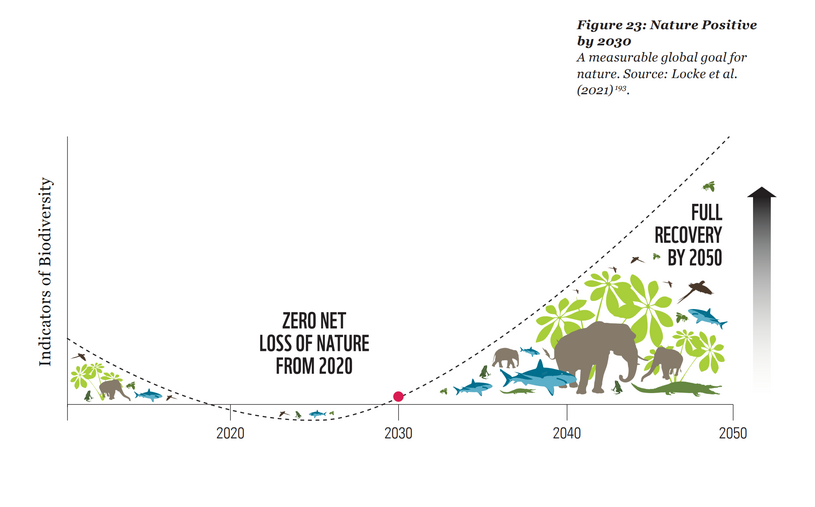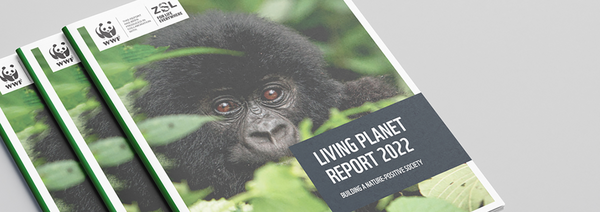Living Planet Report 2022: the global context of our bioregional mission
CHC's mission is "to maintain ecosystem integrity, biological diversity, and forest resiliency throughout the Cold Hollow to Canada region, with a focus on community-led stewardship and the conservation of our working landscape in the face of a changing climate." Every two years – and most recently, this past month – the World Wildlife Fund publishes a Living Planet Report about the global ecological context of CHC's bioregional mission. This new report links two core concepts in the CHC statement, namely climate and biodiversity. It predicts that unless our use of fossil fuel plummets, global heating will soon become the Number One cause of depopulation and extinction for our fellow species. As of right now though, the main cause of biodiversity loss is destruction and degradation of wildlife habitat, driven by "unsustainable agriculture, logging, transportation, urban development, energy production and mining".
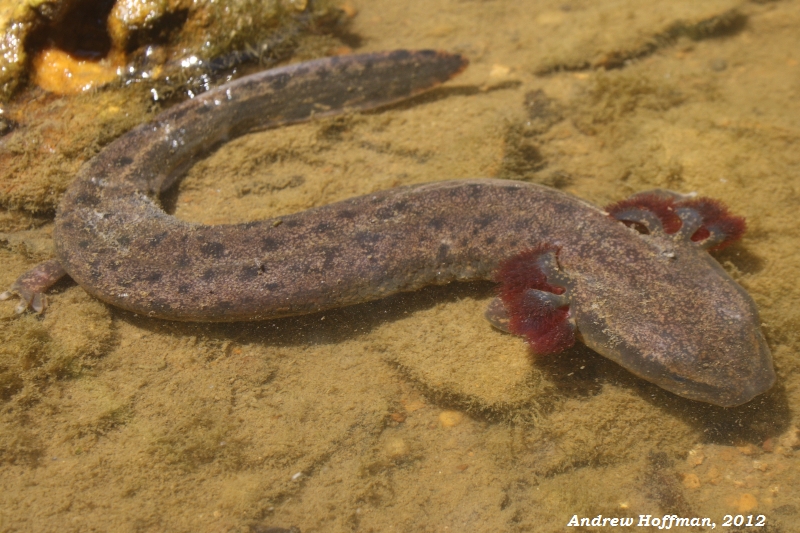
The most distinctive aspect of the Living Planet Report (LPR) is its use of something called the Living Planet Index. This index summarizes what the past half-century of explosive economic growth has done to wild vertebrate populations. The authors of the LPR draw upon all the scientific studies they can lay their hands on, reporting the abundance of a vertebrate population in at least two years between 1970 and 2018. For example, in one study UVM researchers estimated that 300 mudpuppies (Necturus maculosus) – a kind of salamander – inhabited a certain stretch of the Lamoille River in the spring of 2009, but that only 123 lived there the following spring.
This alarming decline of one species in one place during one year turns out to exemplify the overall trend reported for nearly 32,000 populations of more than 5,000 vertebrate species analyzed for the Living Planet Report. Between 1970 and 2018, wild vertebrate populations plunged by an average of 69 percent worldwide. Freshwater populations fared even worse, collapsing by an average of 83 percent. North American vertebrates declined less than elsewhere – by a "mere" 20 percent – but that's because the Living Planet Index only tracks what's happened since 1970. In contrast to the tropics, where people right now are leveling huge tracts of healthy forest to sell the logs and then grow beef cattle, soybeans to feed those cattle, and palm trees; our forebears deforested much of this continent in the 19th and early 20th Centuries. At last year's CHC presentation in Waterville about "Vermont Wildlife through Time", we learned how lucky we are to live in an area that has been slowly regenerating since then.
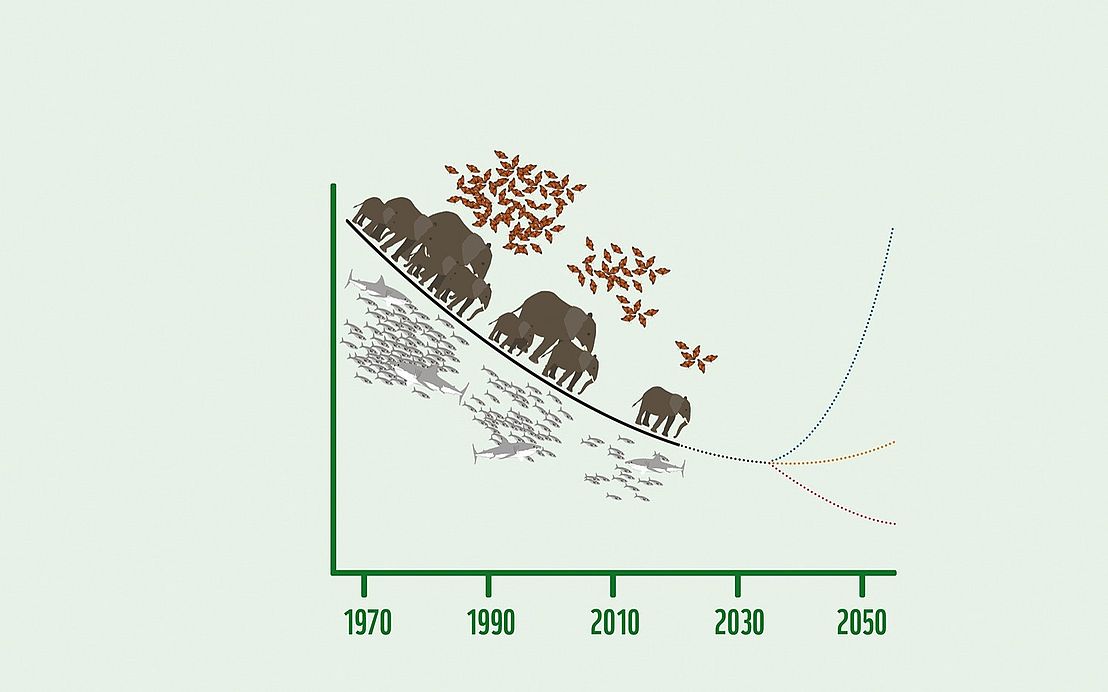
Of course not all vertebrate populations have declined since 1970. For example, spring salamander (Gyrinophilus porphyriticus) populations censused in 2018, by the US Forest Service at the Hubbard Brook Experimental Forest in New Hampshire, generally show an increase since 2012. One can find many inspiring examples of conservation comebacks around the world. This year's Living Planet Report highlights loggerhead turtles in Cyprus, and mountain gorillas where Rwanda, Uganda, and the Democratic Republic of Congo come together. As the authors point out, "nature has shown us that it can bounce back – and quickly – if given a chance". Their example that I found most inspiring is a country where I studied several decades ago, before it enacted rights to a healthy environment in its constitution. Since then Costa Rica has designated 30 percent of its territory as national parks, shifted almost all of its electricity to renewable sources, banned open-pit mining and oil and gas drilling, and used carbon taxes to fund expansion of its forest cover from 25 percent to more than 50 percent of its land.
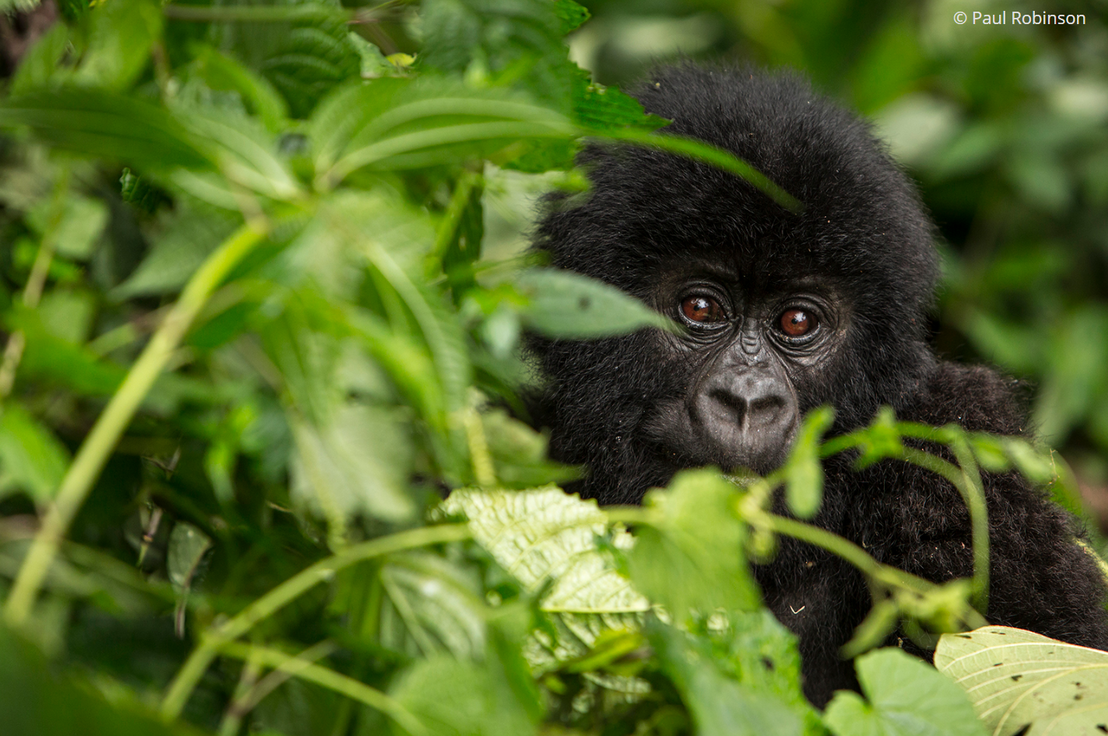
Unfortunately, Hubbard Brook salamanders, Cypriot turtles, Rwandan gorillas, and Costa Rican forests are the exception. Overall "[t]he signs are not good". According to the Living Planet Report, "[b]y the end of this decade… the fight for people and nature will have been won or lost." That is why it calls on folks across the globe – individually yes, but also through institutions including governments – to give our fellow species a break, and create a society that is "nature-positive" by 2030. To do this, we must "protect 30% of the world's land, freshwater and oceans through rights-based and community-led approaches" and "tackle the drivers of nature loss that largely originate in the other 70%".
The goal of protecting 30 percent of all land and water by 2030 roughly matches CHC's goal of doubling the area that is legally protected in the seven-town region by that same year. And the goal of putting the brakes on what happens in the other 70 percent resonates with the appeal made by the keynote speaker at this year's CHC annual gathering, to end the exponential economic growth tearing at human and biotic communities. How shall we achieve these goals? The Living Planet Report falls short in clearly answering this question. But it provides more than enough motivation to find the answers, then put them into practice here in our beloved bioregion.
